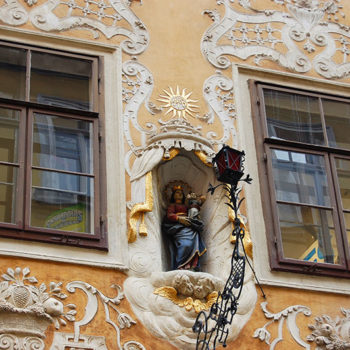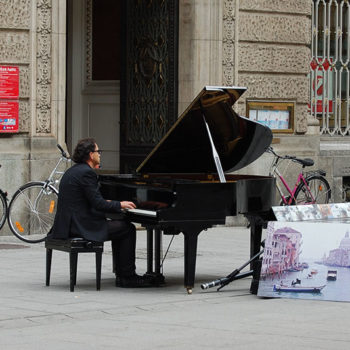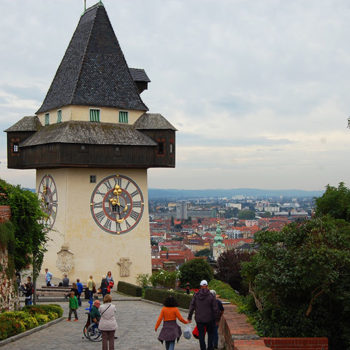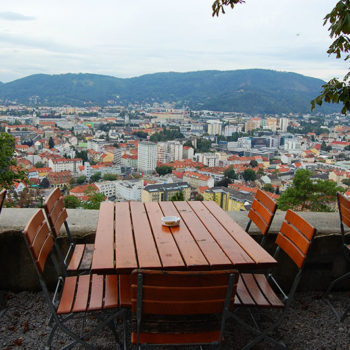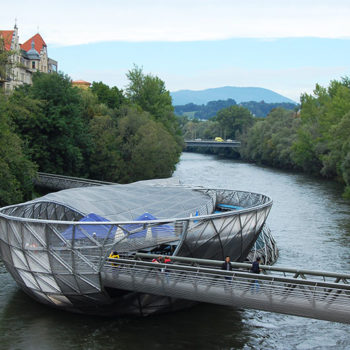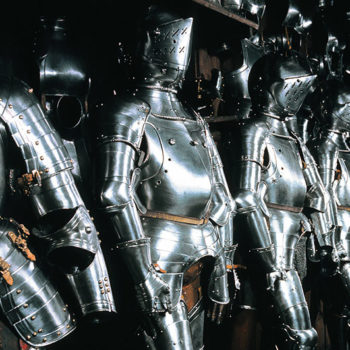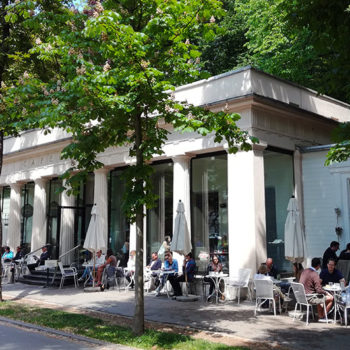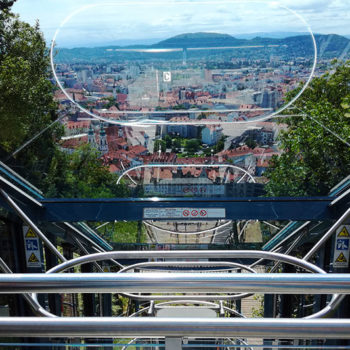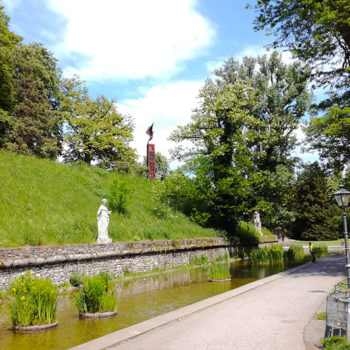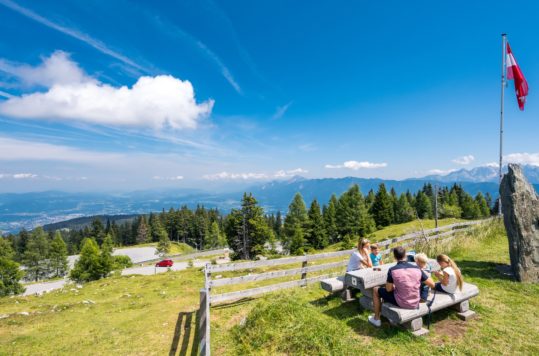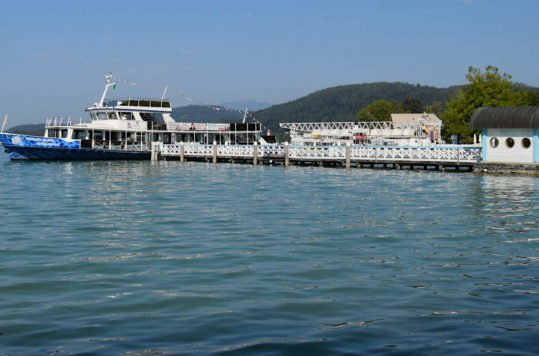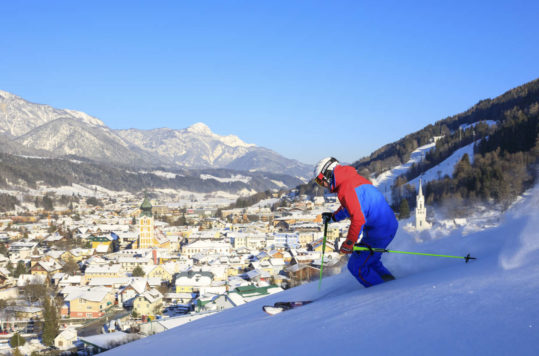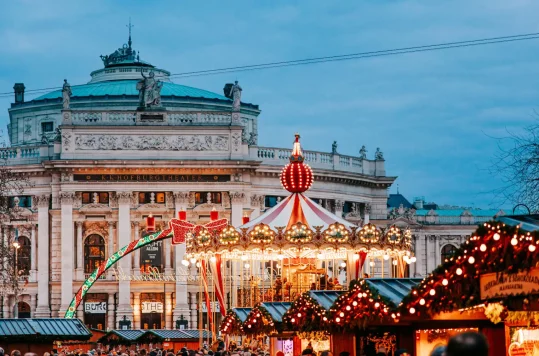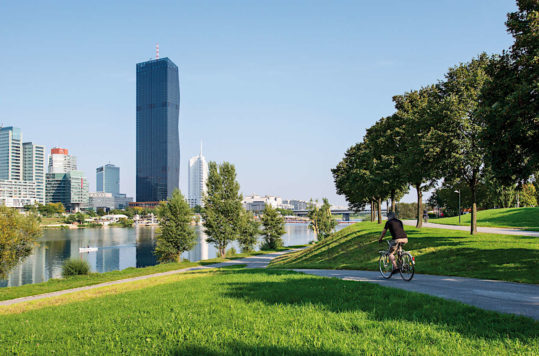In the middle of the green heart of Austria – Styria, Graz spreads out its wings across the plain at the foot of the Alps. Graz is screaming super modern but also radiates a traditional low-key atmosphere.
Although Graz is a relatively big city, most tourist sights and places of interest are in the old town or within a short distance of the city centre. If you are arriving by car, just put it in a parking garage, as many of them are scattered around the city centre, and do your sightseeing on foot. For those who transport themselves, the city has an excellent public transport network. A tram is a good option, especially in the city centre.
The Renaissance city
In the heart of Austria’s second-largest city, you also find a remarkably well-preserved old town, where many buildings date back to the Middle Ages. Nonetheless, it’s primarily the Renaissance architecture that characterises the historic centre of Graz. For example, the Landhaus resembles a Venetian palazzo, with its magnificent Renaissance-style archway facing the courtyard. The old town is full of narrow, romantic alleys and streets where you find Italian-style palaces side-by-side with architecture typical of imperial Austria. The beautiful inner courtyards are very picturesque but often overlooked by passers-by. If you see an open gate, walk in and enjoy the sight of these almost well-kept secrets. It’s easy to spend 3-4 days exploring Graz. Start with the obvious tourist sights, then find the subtler but equally interesting hidden gems.
< Click on the images to enlarge >
Shining armour
The Landeszeughaus – A weapons museum may not be something that suits everyone. However, this museum is exceptional, and I would say somewhat out of the ordinary. It boasts one of the world’s largest weapons collections with over 32,000 items, and most of the military equipment collection dates back to the Middle Ages. Particularly, the collection of numerous knights’ armour takes you back to the age of the knights of shining armour. The Landeszeughaus (Styrian Armoury) offers an exciting museum for big and small kids.
ADVERTISEMENT
The Island of Steel
Graz was one of the cultural capital cities in Europe in 2003. This launched a multitude of projects not only to promote culture but also to showcase the city’s fine architecture. As a result, the river Mur, which flows across the city on its way south, got a new island, Murinsel. Vito Acconci from New York designed a 47-meter-long steel island shaped like a giant sea snail. This is not the only eye-catching building in the middle of the Old Town. Kunsthaus Graz, shaped like a massive glass and steel bubble, has become an icon and trademark of the city. The Kunsthaus Graz houses a museum with Austrian and international contemporary art. Nevertheless, Graz also has much to offer for those who prefer more traditional or historical sights.
The city without a castle
Unlike, for example, Salzburg, Graz has no well-preserved castle or fortress that holds its protective wings over the city. Admittedly, there was also a castle here, but it had to be demolished by the city as part of the peace agreement with Napoleon after Austria had lost the war against France in 1809. However, it was possible to save the bell tower from demolition, and eventually, beautiful landscaping was added to the hillside overlooking the city. The beautiful Schlossberg (Castle Hill) is the best place for a panoramic city view today. The picturesque Clock Tower (Uhrturm) has become the iconic landmark of Graz. There are four ways to get up and down: 1) 260 steps, 2) an elevator, 3) the Schlossbergbahn and finally, you can drive or walk up the Am Fuse des Schlossberg (a street at the back of the Schlossberg).
Graz lively streets
When you are in Graz, don’t spend all your time at museums, but enjoy the street life. Austria’s second-largest city is busy, and the streets on ordinary days are filled with a colourful mix of tourists, business people, and locals. For shopping, you will find a variety of shops of various kinds, including Herrengasse, Sackstrasse, Murgasse, Sporgasse and Schmiedgasse. For restaurants, cafes and bars, for example, go to Südtirolerplatz, Kosakkengasse and Jakominiplatz, where they have converged. If you want to relax and unwind, we recommend the Volksgarten, Städtischer Augarten, Stadtpark and Schlossberg, which are beautiful, well-kept green areas where you can always find a calm space. Finally, head off to the nearest supermarket and get your picnic food for lunch in the park.
Youthful
Styria’s capital is also Austria’s second-largest city, with 292,000 inhabitants. Although the city has long historical roots that have influenced the cityscape, with the castle hill and the old town (a UNESCO world heritage site), Graz is one of Austria’s most youthful cities. The city boasts six universities with more than 45,000 students, which means the city has extensive events and activities catering to young people.

